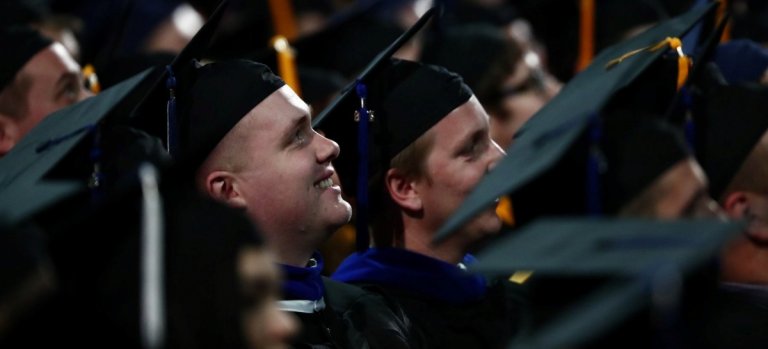
The New York Times (NYT) recently published data revealing the US college dropout crisis. Despite having similar students, in schools with an expected six-year graduation rate, the actual graduation rate varies, according to the NYT‘s investigation with the Urban Institute’s Center on Education Data and Policy.
This finding suggests there are lessons that high-performing schools can give to those who are struggling. These include schools like Bethel University, which had the best performance (30 percent better than its expected graduation rate), SUNY Alfred (24 percent points better) and University of La Verne (22 percent better).
Top-performing colleges in this analysis turned out to come from a variety of backgrounds. They had really high (80 percent) and really low (18 percent) graduation rates. They are privately- and publicly-funded. Their sizes range from big to small.
“If struggling schools could learn some lessons from the high performers, tens of thousands more students could graduate from college each year,” notes the report.
High graduation rate earns #AlfredState a national ranking. This Sunday’s @nytimes will include a study on The College Dropout Crisis. Out of all public colleges in the national study, ASC is No. 1 for a graduation rate that is better than expected. https://t.co/aQSOFwfuKW pic.twitter.com/7YnmfBAPGx
— Alfred State (@AlfredState) May 24, 2019
What can students learn from the findings of this report to avoid dropping out?
High school candidates researching colleges stand to benefit most from these findings. They can look at the interactive feature and narrow the list of colleges to those that had better graduation rates than expected.
As written by the authors, part of the answer as to why some colleges do so much better than others lies in the existence of “structure”.
This refers to defined academic paths. Students tend to do better if they have this, rather than “aimlessly signing up for classes”, as Pamela Jackson, provost of Fayetteville State, said. For example, find a college that assigns everyone a “pre-major” instead of allowing students to be classified as undeclared as Fayetteville State.
Structures based on time matter too. Seek colleges that insist on students taking enough classes to graduate in four years and no more, or those that have “degree road maps”. This lays out a “highly-structured” semester-by-semester academic plan for students to follow toward on-time completion.
CompleteCollege.org advised: “By providing students early opportunities to explore career and program options (including meta majors), offering academic maps that provide semester-by-semester pathways to graduation, and using proactive advising to monitor progress and provide interventions as needed, states, systems and institutions can implement a framework and support system that help students choose a path, maintain momentum on their path and ultimately complete their degree.”
Money and where you stay matter
Colleges with more students living on-campus tend to have higher graduation rates. SUNY Brockport saw its graduation rates improve after more sophomores were encouraged to stay in campus housing.
Choose to live on campus with proximity to resources that can help you through the bad times and stay in college.This includes being close to friends and faculty so you have a support system.
Another lesson to be learned is the power of financial aid. Affordability is “probably the biggest factor” raising graduation rates, said Ben Castleman, education professor at the University of Virginia.
Find as much financial aid as you can. Being able to afford college, including small items like living expenses, can go a long way in making sure you don’t leave without completing.







